Dynamics in the History of Religions
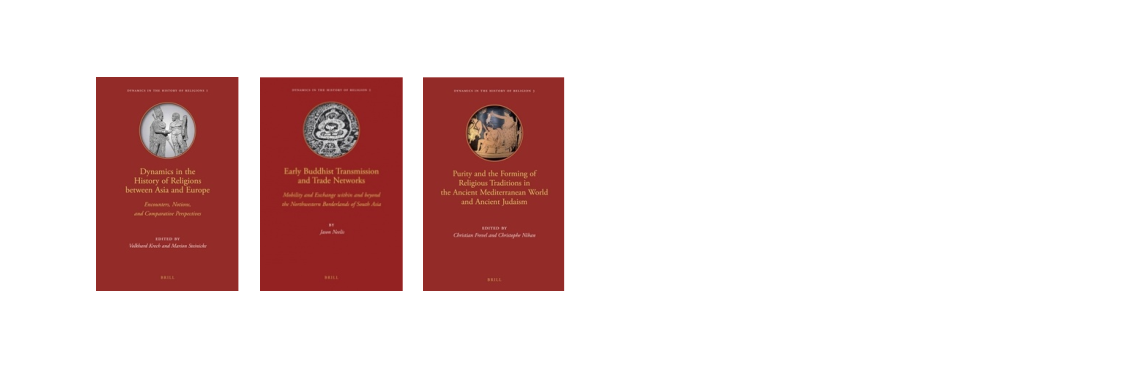
Trying to overcome cultural stereotypes and their ideological misuse, the series "Dynamics in the History of Religions" publishs the important findings of the research by the internationally renowed Käte Hamburger Kolleg Dynamics in the History of Religions between Asia and Europe at Ruhr Universität Bochum, Germany. The volumes focus on the crucial role of mutual encounters in the origins, development, and internal differentiation of the major religious traditions. The primary thesis of the series consists in the assumption that interconnections of self-perception and perception by the other, of adaptation and demarcation are crucial factors for historical dynamics within the religious field. The series is published by Brill.
Latest Titles
DHR12 - Yukiyo Kasai and Henrik Sørensenl (eds.): Buddhism in Central Asia (Part II): Practices and Rituals, Visual and Material Transfer
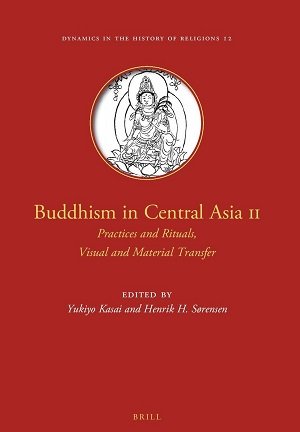
The ERC-funded research project BuddhistRoad ties up to the work of the KHK Dynamics in the History of Religions. It aims to create a new framework to enable understanding of the complexities in the dynamics of cultural encounter and religious transfer in pre-modern Eastern Central Asia. Buddhism was one major factor in this exchange: for the first time the multi-layered relationships between the trans-regional Buddhist traditions (Chinese, Indian, Tibetan) and those based on local Buddhist cultures (Khotanese, Uyghur, Tangut, Khitan) will be explored in a systematic way. The second volume Buddhism in Central Asia II—Practice and Rituals, Visual and Materials Transfer based on the mid-project conference held on September 16th–18th, 2019, at CERES, Ruhr-Universität Bochum (Germany) focuses on two of the six thematic topics addressed by the project, namely on “practices and rituals”, exploring material culture in religious context such as mandalas and talismans, as well as “visual and material transfer”, including shared iconographies and the spread of ‘Khotanese’ themes.
- Yukiyo Kasai & Henrik Sørensen (eds.): Buddhism in Central Asia (Part II): Practices and Rituals, Visual and Material Transfer. Dynamics in the History of Religions 12. Leiden: Brill, 2022. [OPEN ACCESS VERSION]
Further Titles
DHR1 - Volkhard Krech und Marion Steinicke (eds.): Dynamics in the History of Religions between Asia and Europe
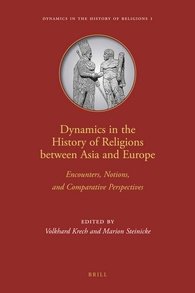
This first volume of the series “Dynamics in the History of Religions” reviews the opening conference of the "Käte Hamburger Kolleg” at the Ruhr-University Bochum. The first section concentrates on the formation of what later come to be termed "world religions" through inter-religious contact, the second part focuses on the significance of interreligious contacts also during their expansive phase. Methodological problems of multi-perspective research and especially the lack of a general religious terminology are discussed in the third chapter, while the final papers outline various aspects of secularization and (re-)sacralisation in the age of globalisation as an effect of multicultural contacts in a world wide web of religious interferences.
DHR2 - Jason Neelis: Early Buddhist Transmisstion and Trade Networks
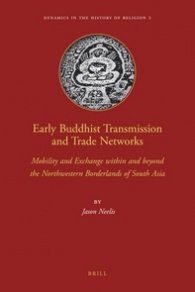
This exploration of early paths for Buddhist transmission within and beyond South Asia retraces the footsteps of monks, merchants, and other agents of cross-cultural exchange. A reassessment of literary, epigraphic, and archaeological sources reveals hisorical contexts for the growth of the Buddhist saṅgha from approximately the 5th century BCE to the end of the first millennium CE. Patterns of dynamic Buddhist mobility were closely linked to transregional trade networks extending to the northwestern borderlands and joined to Central Asian silk routes by capillary routes through transit zones in the upper Indus and Tarim Basin. By examining material conditions for Buddhist establishments at nodes along these routes, this book challenges models of gradual diffusion and develops alternative explanations for successful Buddhist movement.
DHR3 - Christian Frevel und Christophe Nihan (eds.): Purity and the Forming of Religious Traditions
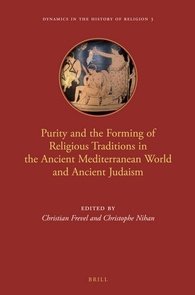
Purity is a cultural construct that had a central role in the forming and the development of religious traditions in the ancient Mediterranean. This volume analyzes concepts, practices and images associated with purity in the main cultures of Antiquity, and discusses from a comparative perspective their parallel developments and transformations. The perspective adopted is both synchronic and diachronic; the comparative approach takes into account points of contact and mutual influences, but also includes major transcultural trends. A number of renowned specialists contribute a large variety of perspectives and approaches, combining archaeology, epigraphy and social history; in addition, particular attention is given to concepts of purity in ancient Israel and early Judaism as a ‘test-case’ of sorts. Through its extensive coverage, the volume contributes decisively to the present discussion about the forming of religious traditions in the ancient Mediterranean world.
DHR4 - Marion Eggert and Lucian Hölscher (eds.): Religion and Secularity

Religion and Secularity traces the history of the conceptual binary of religion and secularity in Europe and the repercussions it had in other regions and cultures of the Eurasian continent during the age of imperialism and beyond. Twelve authors from a wide range of disciplines, deal in their contributions with the trajectory, the concepts of „religion“ and „secularity/secularization“ took, as well as with the corresponding re-configurations of the religious field in a variety of cultures in Europe, the Near and Middle East, South Asia and East Asia. Taken together, these in-depth studies provide a broad comparative perspective on a penomenon that has been crucial for the development of globalized modernity and its regional interpretations.
DHR5 - Peter Wick and Volker Rabens (eds.): Religions and Trade
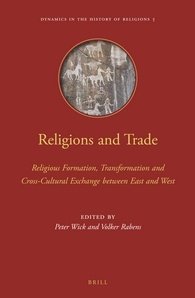
In Religions and Trade a number of international scholars investigate the ways in which eastern and western religions were formed and transformed from the perspective of “trade.” Trade changes religions. Religions expand through the help of trade infrastructures, and religions extend and enrich the trade relations with cultural and religious “commodities” which they contribute to the “market place” of human culture and religion. This leads to the inclusion, demarcation and densification as well as the amalgamation of religious traditions.
In an attempt to find new pathways into the world of religious dynamics, this collection of essays focuses on four elements or “commodities” of religious interchange: topologies of religious space, religious symbol systems, religious knowledge, and religious-ethical ways of life.
DHR6 - Ismoe Jun'ichi: Religious Discourse in Modern Japan. Religion, State, and Shintō
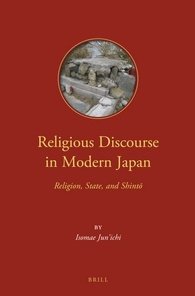
Religious Discourse in Modern Japan explores the introduction of the Western concept of “religion” to Japan in the modern era, and the emergence of discourse on Shinto, philosophy, and Buddhism. Taking Anesaki’s founding of religious studies (shukyogaku) at Tokyo Imperial University as a pivot, Isomae examines the evolution of this academic discipline in the changing context of social conditions from the Meiji era through the present. Special attention is given to the development of Shinto studies/history of Shinto, and the problems of State Shinto and the emperor system are described in relation to the nature of the concept of religion. Isomae also explains how the discourse of religious studies developed in connection with secular discourses on literature and history, including Marxism.
DHR7 - Matthias Bley, Nicolas Jaspert and Stefan Kock (eds.): Discourses of Purity in Transcultural Perspective (300-1600)
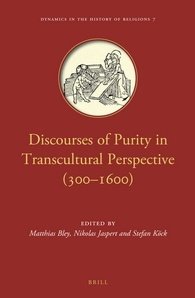
While comparative studies on purity and impurity presented in the last decades have mostly concentrated on the ancient world or on modern developments, this volume focusses the hitherto comparatively neglected period between ca. 300 and 1600 c. E. The collection is innovative because it not only combines papers on both European and Asian cultures but also considers a wide variety of religions and confessions. The articles are written by leading experts in the field and are presented in six systematic sections. This analytical categorization facilitates understanding the functional spectrum that the binomial purity and impurity could cover in past societies. The volume thus presents an in-depth comparative analysis of a category of paramount importance for interfaith relations and processes of transfer.
DHR8 - Carmen Meinert (ed.): Transfer of Buddhism Across Central Asian Networks (7th to 13th Centuries)
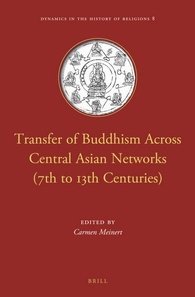
The interdisciplinary volume Transfer of Buddhism across Central Asian Networks (7th to 13th Centuries), edited by Carmen Meinert, offers a new transregional and transcultural vision for religious transfer processes in Central Asian history. It looks at the region as an integrated (religious) whole rather than from the perspective of fragmented sub-disciplines and analyses the spread of Buddhism as a driving force in a societal and cultural change of pan-Asian importance. One particular dimension of this ‘Buddhist globalisation’ was the rise of local forms of Buddhism. This volume explores Buddhist localisations through manuscripts and material culture in the multiethnic oases of the Tarim basin, the Transhimalyan region of Zangskar, Ladakh and Kashmir and the Western Tibetan Kingdom of Purang-Guge.
DHR9 - Reinhold Glei & Nikolaus Jaspert (eds.): Locating Religions. Contact, Diversity, and Translocation
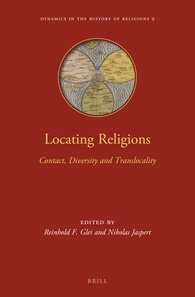
This collection of articles is an innovative contribution to religious studies, because it picks up concepts developed in the wake of the so-called “spatial turn”. Religions are always located in a certain cultural and spatial environment, but often tend to locate (or translocate) themselves beyond that original setting. Also, many religious traditions are not only tied to or associated with the area its respective adherent live in, but are in fact “bi-local” or even “multi-local”, as they closely relate to various spatial centers or plains at once. This spatial diversity inherent to many religions is a corollary to religious diversity or plurality that merits in-depth research. The articles in this volume present important findings from a series of settings within and between Asia and Europe.
Book review at readingreligion.org
DHR10 - Ann Heirman, Carmen Meinert and Christoph Anderl (eds.): Buddhist Encounters and Identities Across East Asia
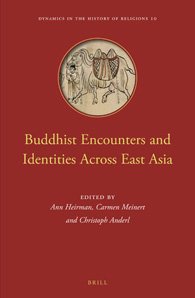
Encounters, networks, identities and diversity are at the core of the history of Buddhism. They are also the focus of Buddhist Encounters and Identities across East Asia, edited by Ann Heirman, Carmen Meinert and Christoph Anderl. While long-distance networks allowed Buddhist ideas to travel to all parts of East Asia, it was through local and trans-local networks and encounters, and a diversity of people and societies, that identities were made and negotiated. This book undertakes a detailed examination of discrete Buddhist identities rooted in unique cultural practices, beliefs and indigenous socio-political conditions. Moreover, it presents a fascinating picture of the intricacies of the regional and cross-regional networks that connected South and East Asia. It addresses all those interested in the history of Buddhism in East Asia and in East Asian Buddhist cultural practices, and anyone with an interest in the diffusion and transformation of Buddhism.
DHR11 - Carmen Meinert und Sørensen (Hrsg.): Buddhism in Central Asia (Part I): Patronage, Legitimation, Sacred Space, and Pilgrimage
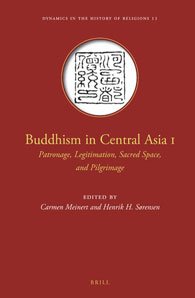
The ERC-funded research project BuddhistRoad ties up to the work of the KHK Dynamics in the History of Religions. It aims to create a new framework to enable understanding of the complexities in the dynamics of cultural encounter and religious transfer in pre-modern Eastern Central Asia. Buddhism was one major factor in this exchange: for the first time the multi-layered relationships between the trans-regional Buddhist traditions (Chinese, Indian, Tibetan) and those based on local Buddhist cultures (Khotanese, Uyghur, Tangut, Khitan) will be explored in a systematic way. The first volume Buddhism in Central Asia (Part I): Patronage, Legitimation, Sacred Space, and Pilgrimage is based on the start-up conference held on May 23rd–25th, 2018, at the Center for Religious Studies (CERES), Ruhr-Universität Bochum and focuses on the first two of altogether six thematic topics to be dealt with in the project, namely on “patronage and legitimation strategy” as well as “sacred space and pilgrimage.

